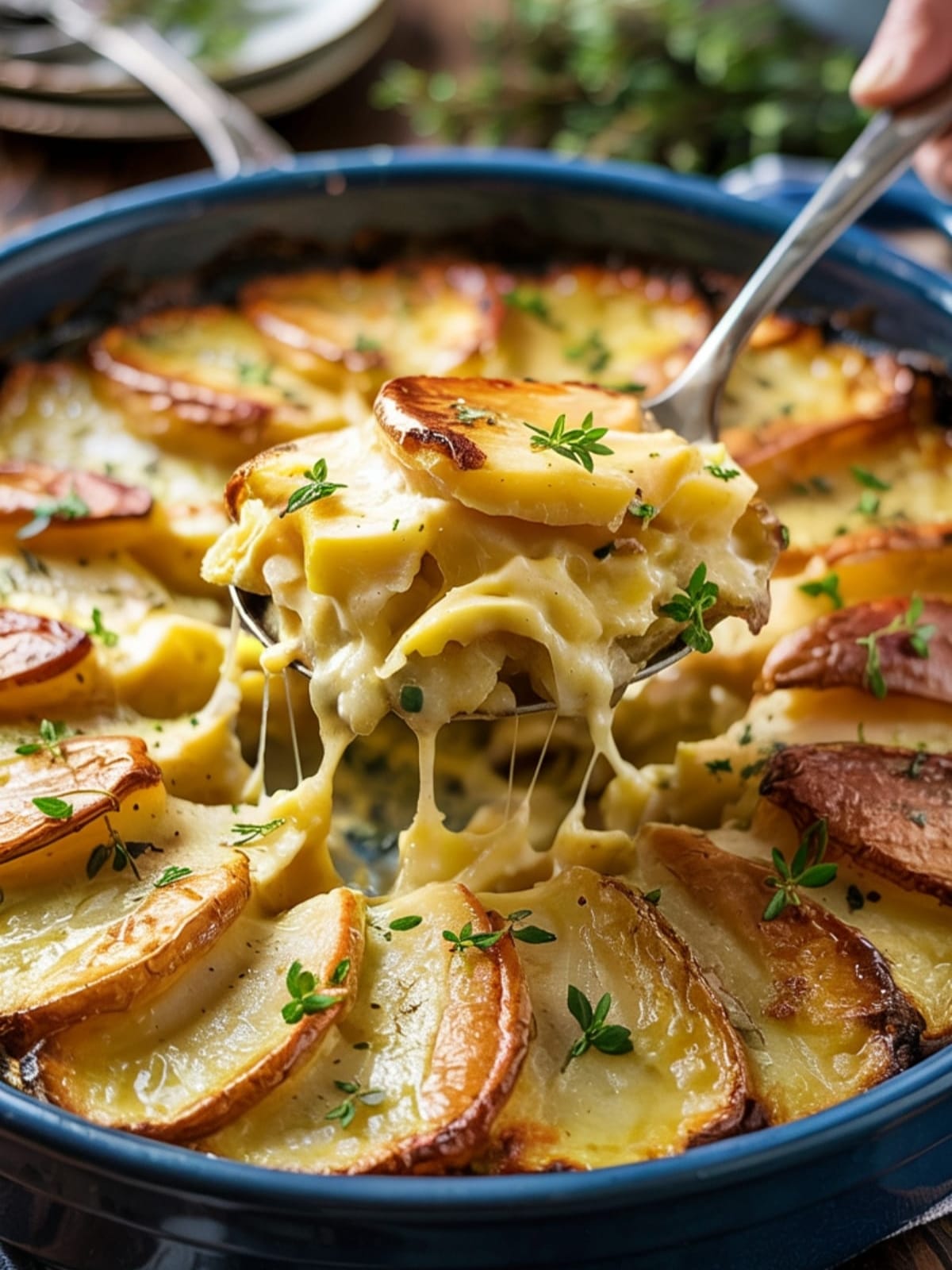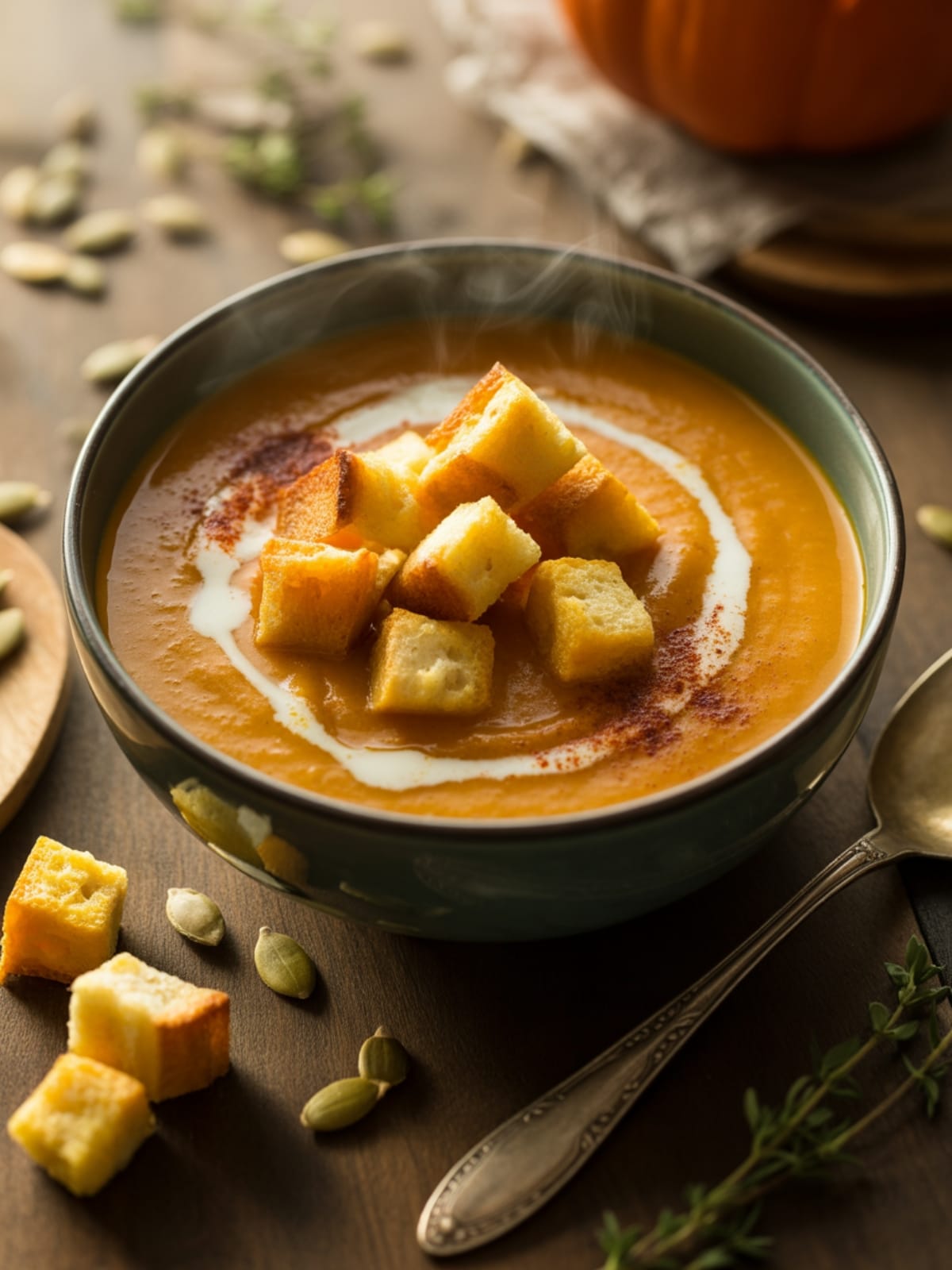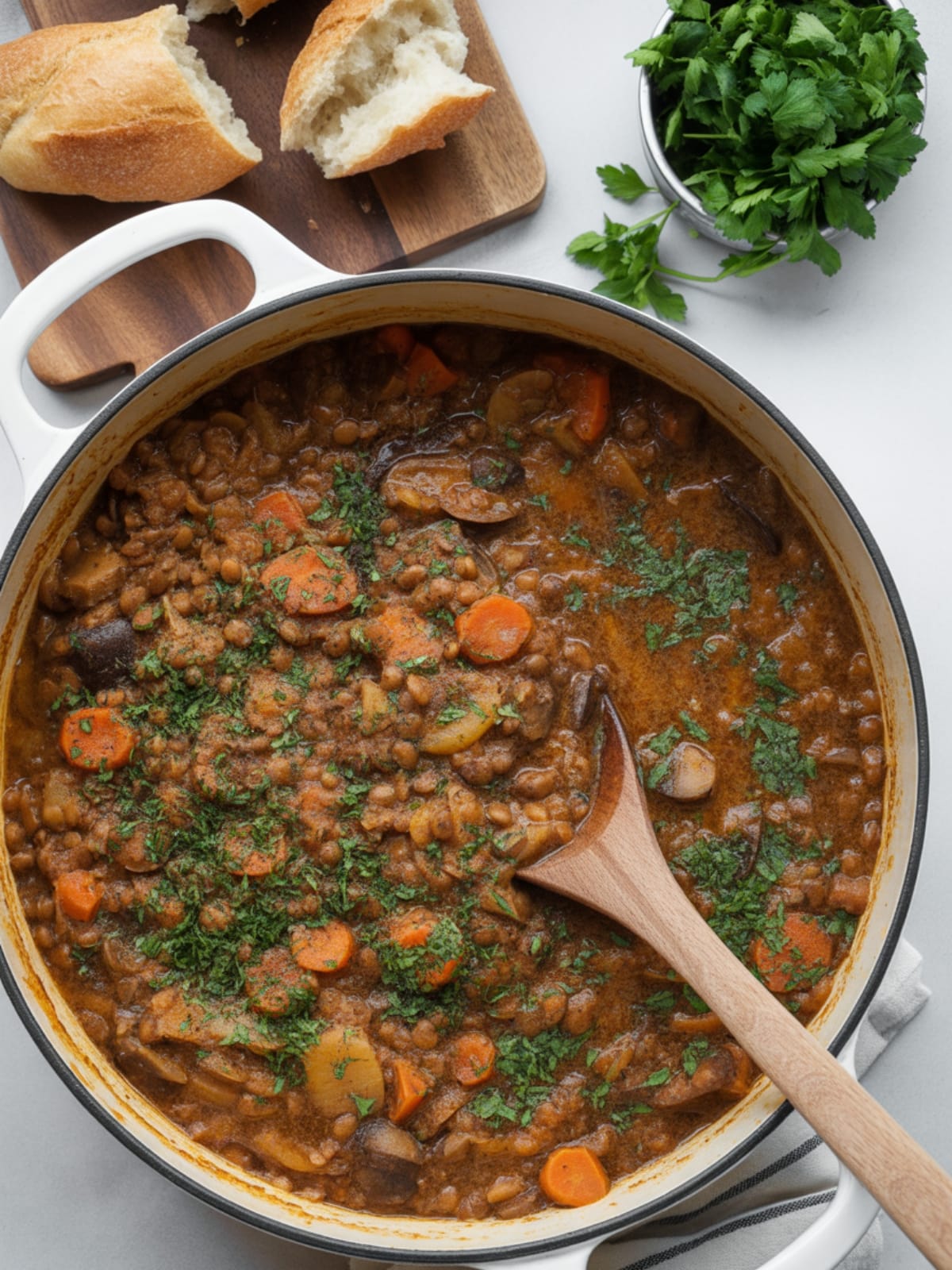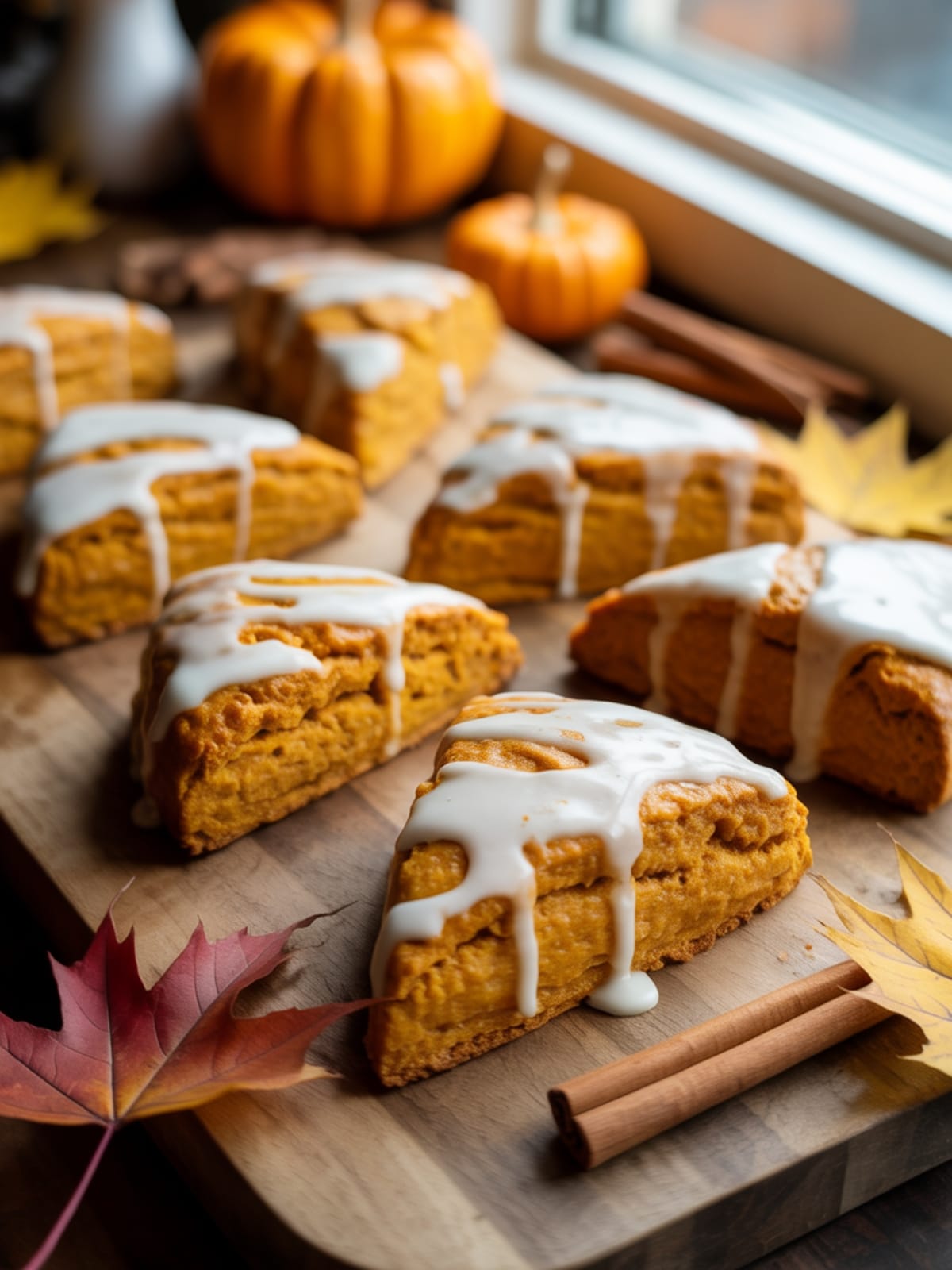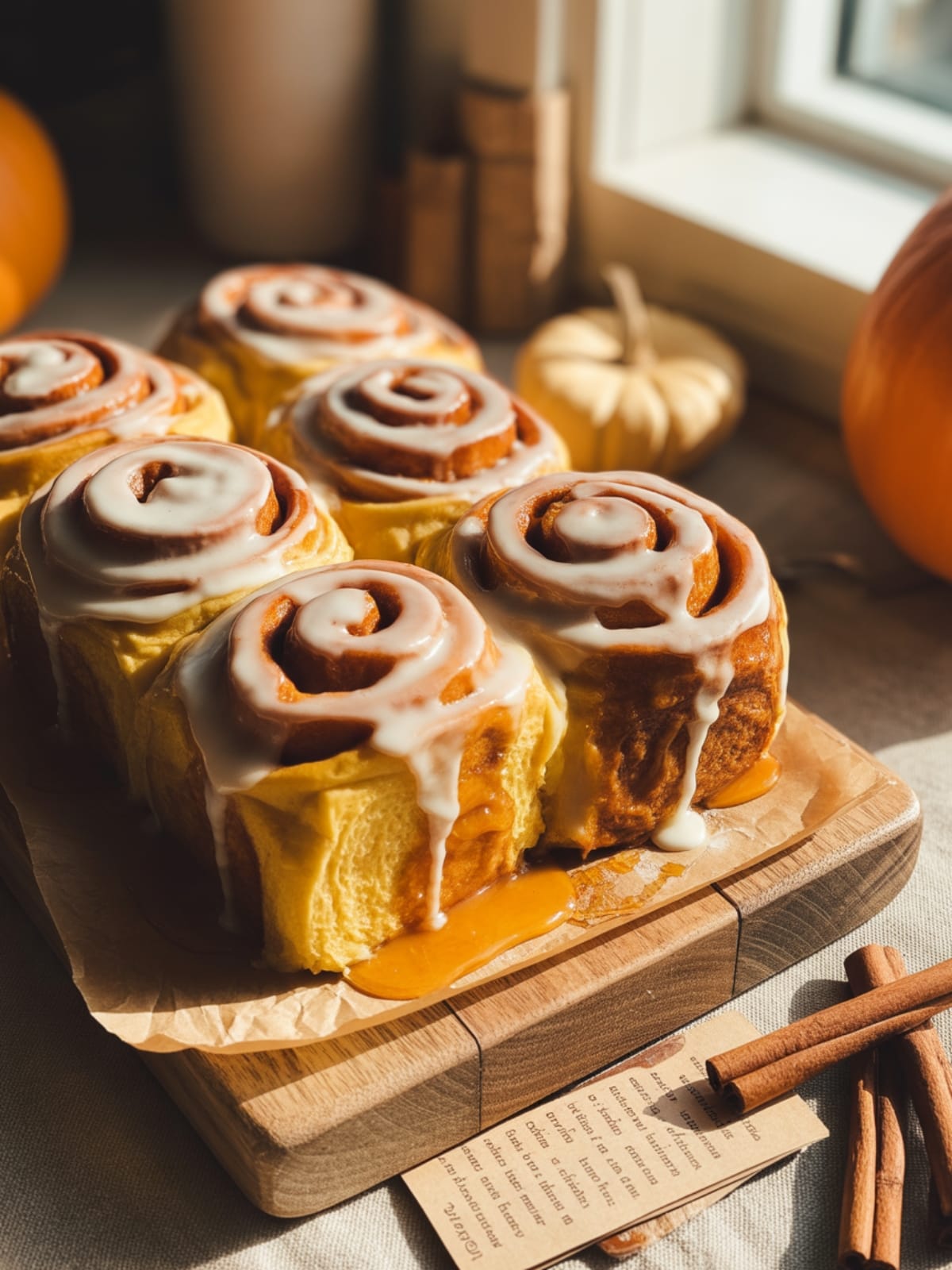Let’s cut right to the chase: scalloped potatoes au gratin are basically the sweatpants of side dishes—ridiculously comforting, always satisfying, and somehow still impressive despite how easy they are to throw together. If you’ve been intimidated by making them at home, I’m about to change your life. These creamy, cheesy layers of potato goodness are actually embarrassingly simple to make, and I’m going to show you how to nail it every single time.
Why This Recipe is Awesome
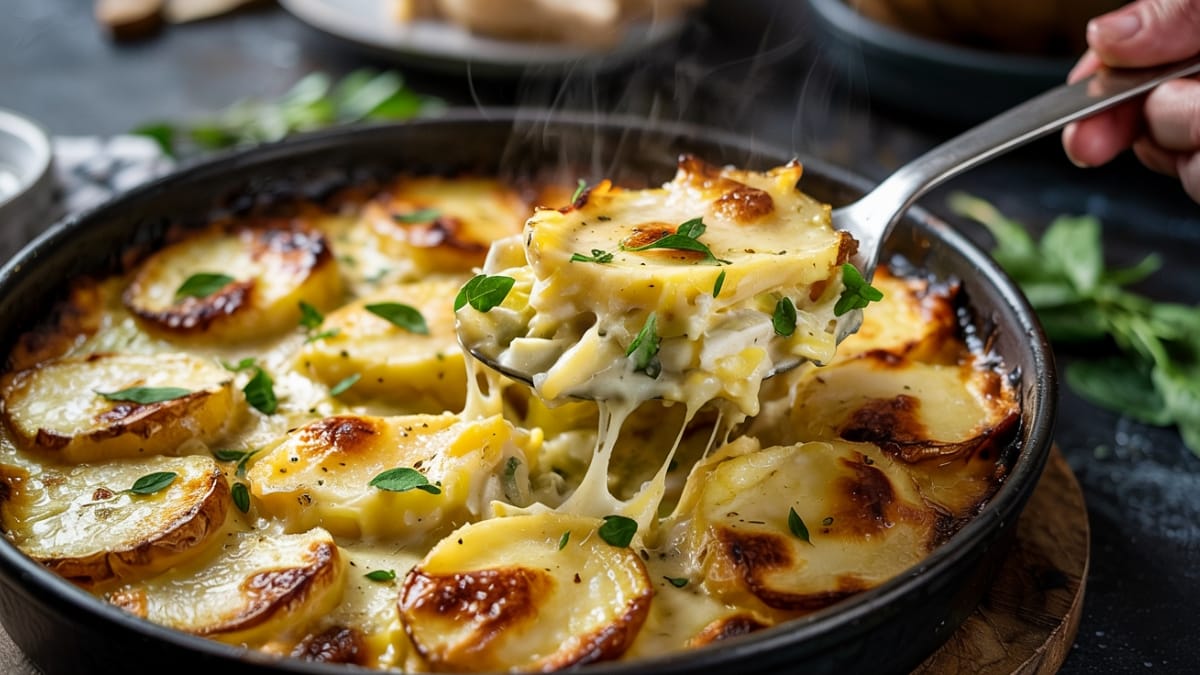
First of all, these scalloped potatoes au gratin exist in that perfect space between “everyday comfort food” and “fancy enough for company.” They’re basically potatoes wearing a tuxedo.
What makes this recipe particularly awesome is that it’s absolutely foolproof. No more soupy potatoes. No more undercooked slices hiding in the middle. No more bland, forgettable side dishes. These potatoes deliver that perfect balance of creamy sauce and tender potatoes, with a gloriously golden, bubbly cheese top that will have your family circling the dinner table like hungry sharks.
Plus, if someone asks what you’re making for dinner and you say “scalloped potatoes au gratin” instead of just “cheesy potatoes,” you instantly sound 73% fancier. That’s just science.
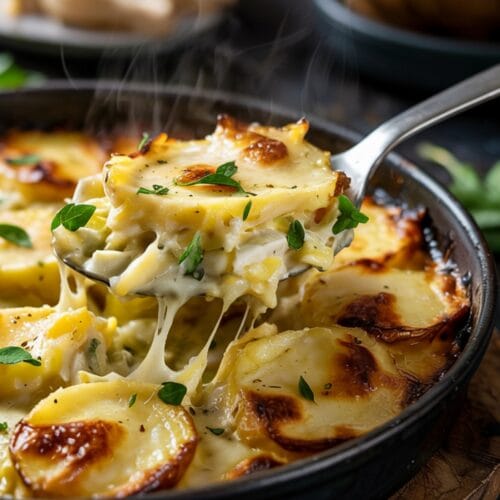
Scalloped Potatoes Au Gratin
Ingredients
- 3 pounds russet potatoes about 6-7 medium potatoes
- 4 tablespoons butter
- 1 medium onion finely diced
- 3 cloves garlic minced
- 3 tablespoons all-purpose flour
- 2 cups whole milk
- 1 cup heavy cream
- 1 teaspoon salt
- 1/2 teaspoon black pepper
- 1/4 teaspoon nutmeg trust me on this one
- 2 cups sharp cheddar cheese grated and divided
- 1 cup Gruyère cheese grated (or swap for more cheddar if Gruyère is being all expensive and pretentious)
- 2 tablespoons fresh thyme leaves or 1 teaspoon dried
- Paprika for sprinkling optional but makes it pretty
- 2 tablespoons fresh parsley chopped (for garnish and to make it look like you put in extra effort)
Instructions
- Preheat your oven to 375°F (190°C). Grease your baking dish with butter or cooking spray. This is not the moment to test your faith in non-stick surfaces.
- Wash and peel the potatoes. I know, peeling potatoes is the worst, but the smooth texture is worth it. Think of it as potato therapy.
- Slice the potatoes into 1/8-inch thick rounds. Consistency is key here—too thick and they’ll never cook through, too thin and they’ll disintegrate. A mandoline makes this job ridiculously easy, but a sharp knife and steady hand work just fine.
- Place the sliced potatoes in a bowl of cold water to prevent browning while you make the sauce. Yes, this extra step matters.
- In a large saucepan over medium heat, melt the butter. Add the diced onions and cook until translucent, about 3-4 minutes.
- Add the minced garlic and cook for another 30 seconds until fragrant. Don’t burn the garlic unless you’re trying to summon disappointed Italian grandmothers.
- Sprinkle the flour over the onion-garlic mixture and stir constantly for 1-2 minutes to cook out the raw flour taste. It should look like a paste.
- Gradually whisk in the milk and cream. Emphasis on gradually—dump it all at once and you’ll be fighting lumps for the next ten minutes.
- Bring the mixture to a simmer, stirring frequently, until it thickens enough to coat the back of a spoon, about 5 minutes.
- Turn off the heat and stir in the salt, pepper, nutmeg, half of the cheddar cheese, and all of the Gruyère until melted and smooth.
- Drain the potatoes and pat them dry with a clean kitchen towel. Wet potatoes = watery gratin. Nobody wants that.
- Layer 1/3 of the potatoes in the bottom of your prepared baking dish, slightly overlapping them like they’re spooning.
- Pour 1/3 of the cheese sauce over the potatoes and sprinkle with some thyme.
- Repeat with another 1/3 of potatoes, 1/3 of sauce, and more thyme.
- Finish with the remaining potatoes, the remaining sauce, and the reserved cheddar cheese on top. Sprinkle with the last of the thyme and a light dusting of paprika if using.
- Cover the dish with aluminum foil and bake for 40 minutes.
- Remove the foil and continue baking for an additional 20-25 minutes, until the top is golden brown and bubbly, and the potatoes are fork-tender.
- Let stand for 10 minutes before serving. This resting time is non-negotiable unless you enjoy mouth burns and soupy potatoes.
- Sprinkle with fresh parsley for that “I’m a food stylist” finish.
Notes
- The key to creamy (not soupy) scalloped potatoes is removing excess moisture from the potatoes after slicing and creating a properly thickened sauce.
- If your sauce seems too thick, add a little more milk. If it’s too thin, let it simmer a bit longer.
- These potatoes are even better the next day after the flavors have had time to get friendly with each other in the refrigerator.
- You can assemble this dish up to 24 hours in advance and refrigerate unbaked. Just add about 15 minutes to the covered baking time.
- For an extra golden top, switch your oven to broil for the last 2-3 minutes—but watch it like a hawk. The difference between “beautifully browned” and “carbon” is about 30 seconds.
- If you’re halving the recipe, use an 8×8 inch baking dish and reduce the baking time by about 10 minutes.
- Want to make this a main dish? Add cooked ham or bacon between the layers, or serve with a simple green salad and crusty bread.
Calories & Nutritional Info
- Calories: Approximately 380 per serving
- Protein: 14g per serving
- Fat: 24g per serving
- Carbohydrates: 30g per serving
- Fiber: 2g per serving
- Calcium: 35% of daily value (thanks, cheese!)
- Vitamin C: 15% of daily value
- This is not health food. This is happy food. There’s a difference.
Common Mistakes to Avoid
- Using the wrong potatoes. Russets are your best friend here. Waxy potatoes like Yukon Golds won’t absorb the sauce as well.
- Cutting the potatoes unevenly. Unless you enjoy a texture adventure with some crunchy and some mushy bites, aim for consistency.
- Skipping the sauce-thickening step. Impatience here leads to potato soup, not scalloped potatoes.
- Overcrowding the baking dish. The potatoes need a little room to bubble and get saucy. This isn’t a potato-packing competition.
- Under-seasoning. Potatoes need salt. Period. Bland scalloped potatoes are a culinary tragedy.
- Rushing the baking process. These need time to get all tender and bubbly. You can’t hurry love or properly cooked scalloped potatoes.
- Skipping the resting period. Cut into these too soon and you’ll have potato avalanche on your plate.
- Using pre-shredded cheese. That anti-caking stuff makes your sauce grainy. Grate your own for maximum creaminess.
Alternatives & Substitutions
- Cheese options: Not into Gruyère? Use Fontina, Gouda, Monterey Jack, or just more cheddar. Blue cheese adds a funky kick if you’re feeling adventurous.
- Milk/cream substitutes: For a lighter version, use all whole milk instead of cream. For dairy-free, unsweetened almond milk works surprisingly well (but skip the nutmeg).
- Herb variations: Rosemary or sage instead of thyme. Or go classic with just parsley.
- Add vegetables: Thinly sliced leeks instead of onions are amazing. Layer in some spinach or kale for a token vegetable presence.
- Meat additions: Crispy bacon bits, diced ham, or shredded chicken transform this into a main dish.
- Gluten-free option: Substitute the flour with rice flour or gluten-free all-purpose flour blend.
- Spice it up: Add a pinch of cayenne or a diced jalapeño to the sauce for a kick.
- Breadcrumb topping: Mix 1/2 cup panko breadcrumbs with 2 tablespoons melted butter and sprinkle on top for the last 15 minutes of baking.
FAQs
What’s the difference between scalloped potatoes and au gratin?
Technically, traditional scalloped potatoes don’t include cheese and are cooked in a cream sauce, while potatoes au gratin are made with cheese. This recipe is a delicious hybrid—hence the name “scalloped potatoes au gratin.” It’s the best of both worlds, and I refuse to choose between creamy sauce and melty cheese when we can have both.
Can I make these ahead of time?
Absolutely! You can assemble the entire dish up to 24 hours ahead, cover, refrigerate, and bake when ready. Just add about 15 minutes to the covered baking time since you’re starting from cold. You can also bake it completely, refrigerate, and reheat at 350°F covered until warm throughout (about 30 minutes).
Why are my scalloped potatoes watery?
There are a few usual suspects: 1) The sauce wasn’t thickened properly, 2) The potatoes weren’t dried after slicing, or 3) The potatoes released too much moisture during baking. Make sure to thoroughly dry the sliced potatoes, properly thicken your sauce, and let the final dish rest before serving.
Can I freeze scalloped potatoes?
You can, but I wouldn’t recommend it for optimal texture. Potatoes can get grainy after freezing and thawing, and the sauce might separate. If you must freeze them, do so after baking and cooling completely. Thaw overnight in the refrigerator and reheat covered at 350°F until heated through.
Can I use a different type of potato?
Russets are ideal because they’re starchy and absorb the creamy sauce beautifully. Yukon Golds will work in a pinch but give a slightly different texture. Avoid waxy potatoes like red potatoes or new potatoes—they hold their shape too well and won’t absorb the sauce properly.
How do I know when the potatoes are done?
Insert a knife or fork into the center of the dish—it should slide through the potatoes easily with no resistance. If there’s any firmness, they need more time. Different oven temperatures and potato slice thicknesses can affect cooking time, so always test for doneness rather than relying solely on timing.
Can I make this in a slow cooker?
Yes, but with modifications. Layer everything as directed in your slow cooker, cook on low for 4-5 hours or high for 2-3 hours until potatoes are tender. The top won’t get that signature golden brown crust, but the flavor will still be delicious. For the best of both worlds, transfer to a baking dish for the last 15 minutes under the broiler.
Final Thoughts
There you have it—scalloped potatoes au gratin that deliver on creaminess, cheesiness, and pure comfort food bliss. Whether you’re serving them alongside a holiday ham, Sunday roast, or just because it’s Tuesday and you deserve something special, these potatoes never disappoint. They’re that perfect side dish that sometimes steals the show from the main course (and nobody minds). So go ahead, make a double batch. The leftovers are even better, if they last that long.
